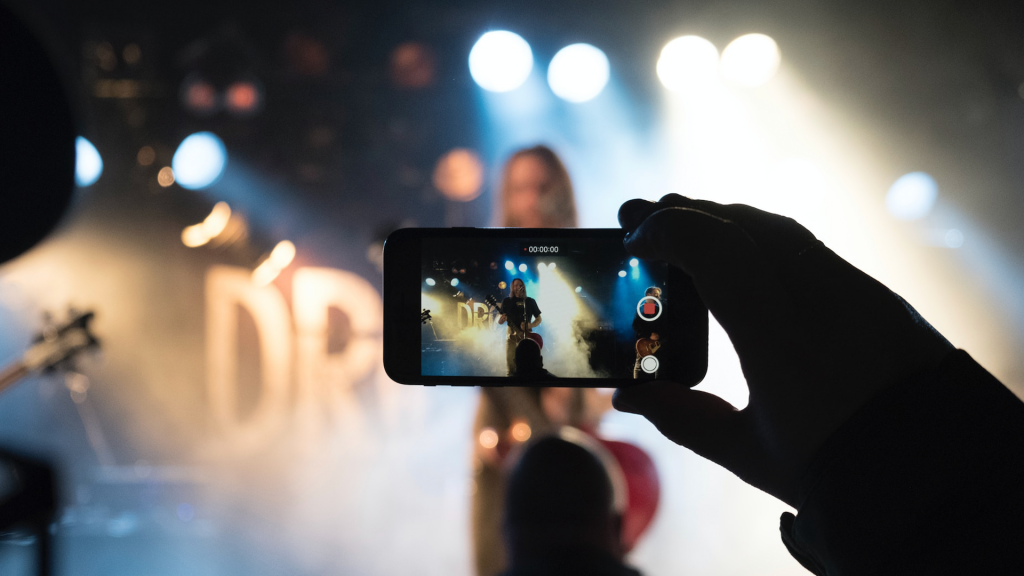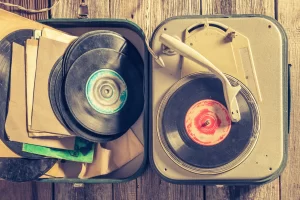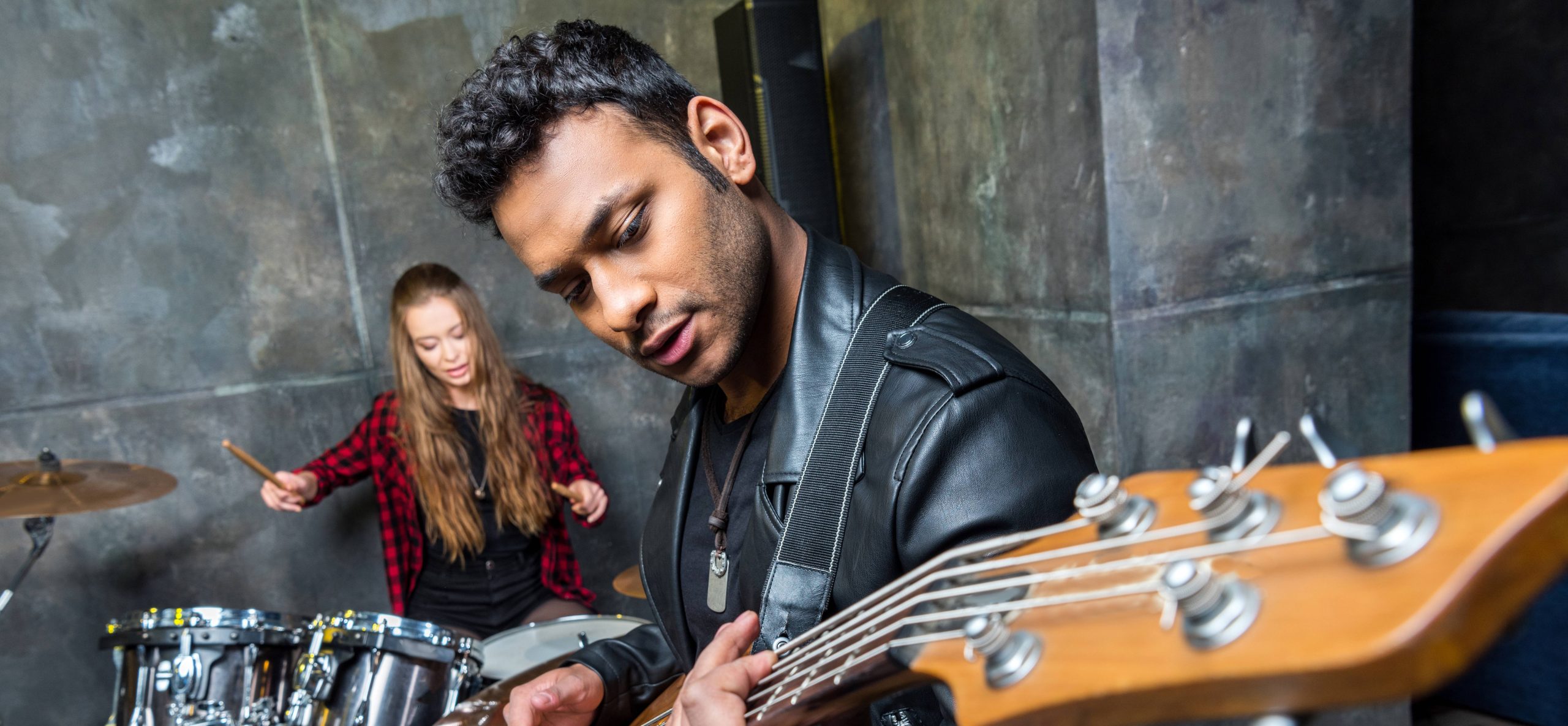In recent years, live streaming has become an increasingly popular and powerful tool for musicians to connect with their audience, showcase their talents, and grow their fan base. The advent of social media platforms and advancements in streaming technology have made it easier than ever for artists to reach a global audience and share their music in real time.
This comprehensive guide to live streaming for musicians will help you understand the benefits of live streaming, choose the right platform, set up your equipment, and develop a successful streaming strategy that will boost your music career.
Live streaming has numerous advantages for musicians, such as increasing visibility, creating a direct connection with fans, and generating income through virtual performances and tips. It provides an alternative to traditional live performances, which can be resource-intensive and challenging to organize, especially for independent artists.
By incorporating live streaming into your promotional efforts, you can expand your reach, engage with your audience on a more personal level, and adapt to the ever-changing landscape of the music industry. In this guide, we’ll walk you through the essential steps and considerations to make the most of live streaming and elevate your music career.
Choosing the Right Live Streaming Platform
Selecting the appropriate platform for your live streaming endeavors is crucial, as it can significantly impact your audience reach, engagement, and overall streaming experience. There are several popular platforms available, each with its unique features and target audiences. When deciding on a platform, consider factors such as ease of use, potential audience size, monetization options, and compatibility with your streaming goals. Here are some of the most popular live streaming platforms for musicians:
Facebook Live
Facebook Live allows you to stream directly from your Facebook profile, page, or group, making it an accessible option for artists who already have an established presence on the platform. With its large user base, Facebook Live offers significant audience reach potential. Additionally, you can monetize your streams through Facebook Stars, which allows fans to send virtual gifts during your performance.
Instagram Live
Instagram Live is an excellent option for musicians looking to engage with a younger, more visually-oriented audience. Streaming on Instagram Live is relatively straightforward, and it offers features such as real-time comments and the ability to invite guests to join your stream. However, Instagram Live doesn’t currently offer built-in monetization options.
YouTube Live
As the largest video-sharing platform globally, YouTube Live offers vast audience reach potential and robust monetization options, such as Super Chat, ads, and channel memberships. YouTube Live is ideal for musicians with an existing YouTube presence or those looking to create high-quality, longer-form content.
Twitch
Originally focused on gaming, Twitch has expanded its scope to include various creative categories, including music. Twitch offers a dedicated and engaged community, making it an excellent platform for musicians seeking to build a loyal fan base. Monetization options on Twitch include donations, subscriptions, and ads.
StageIt
StageIt is a live streaming platform specifically designed for musicians, allowing you to create ticketed online concerts and earn money from tips. With its focus on music, StageIt offers an intimate and supportive environment for artists to connect with fans.
When choosing a live streaming platform, consider your audience, streaming goals, and desired level of interaction with your fans. You may also want to experiment with multiple platforms to determine which one best suits your needs and yields the most significant results.
Setting Up Your Live Streaming Space
Once you’ve chosen your platform, it’s time to set up your live streaming space. This space is where you’ll perform, so it’s crucial that it’s well-lit, quiet, and visually appealing to ensure a positive experience for your viewers.
Location
The first thing you need to decide is the location. The location should be quiet, free of potential interruptions, and ideally, where you can control the lighting. This could be a spare room in your home, a corner of your living room, or even your recording studio if you have one. Remember, your viewers will likely see your surroundings, so choose a space that represents you as an artist and creates an atmosphere that complements your music.
Lighting
Good lighting is essential for high-quality live streams. Natural light is the best option, but if you’re streaming at night or in a room without windows, you’ll need to set up artificial lighting. You don’t need professional equipment for this – a simple ring light or a couple of strategically placed lamps can do the trick. Your goal is to illuminate your face and any instruments you’re playing without creating harsh shadows or glare.
Audio
For musicians, the sound quality of a live stream is even more critical than the video quality. While the built-in microphone on your smartphone or laptop might be sufficient for casual streams, consider investing in an external microphone for better audio quality. If you’re playing an instrument, you may also need an audio interface to connect your instrument to your device. Always do a sound check before you start streaming to ensure your audience can hear you clearly.
Camera
Your camera should be positioned at eye level and angled to capture you and your instrument clearly. If you’re using your phone, you can invest in a tripod for stability. If you’re using a laptop, you might need to prop it up on a stand or a stack of books. Test out different angles and distances before your live stream to find the best setup.
Background
Finally, consider your background. A messy or distracting background can detract from your performance. Aim for a neat, uncluttered space that enhances your presence rather than competing with it. This could mean adding some simple decorations like posters, a backdrop, or some plants. Remember, your streaming space is an extension of your brand as a musician, so make it count.
By paying attention to these aspects, you can create a live streaming space that not only looks and sounds great but also offers a unique and engaging experience for your viewers. Remember, the goal is to recreate the intimate and immersive experience of a live performance as much as possible, and your space plays a significant role in achieving this.
Preparing and Rehearsing Your Live Stream
Even with the most professional setup, your live stream’s success heavily depends on your preparation and rehearsal. From setting a performance schedule to running a mock stream, there are several things to consider.
Set a Schedule
One of the first things to do is to set a schedule for your live stream. This will depend on your audience’s location and availability. Use analytics from your social media and streaming platforms to understand when your fans are most active. Consistency is key in maintaining and growing your viewer base, so try to stick to a regular schedule.
Plan Your Setlist
As a musician, your primary content is your music. Plan a setlist for your live stream, taking into consideration the length of your stream and the diversity of your repertoire. Engage your audience by mixing up your popular songs with new material, and consider taking requests to keep viewers engaged and excited.
Rehearse Your Stream
It’s essential to rehearse your live stream to ensure that everything runs smoothly. Practice your setlist, but also rehearse interacting with your audience between songs. Live streaming isn’t just about playing music; it’s also about engaging with your audience in real-time.
During your rehearsal, make sure to test your equipment. Ensure the lighting is right, the audio quality is top-notch, and the camera angle is correct. This is also an excellent opportunity to gauge if there’s any lag between the audio and video, and adjust accordingly.
Do a Test Stream
Consider doing a private test stream for a small group of trusted friends or fans. They can provide valuable feedback about your performance, audio and video quality, and the overall streaming experience. This can help you identify and resolve any issues before going live to a wider audience.
Promote Your Live Stream
Lastly, make sure to promote your live stream in advance. Share the date, time, and platform on all your social media channels, and consider sending out an email blast if you have a mailing list. Encourage your followers to set reminders and share the event to increase visibility and attendance.
By properly preparing and rehearsing for your live stream, you not only ensure a smooth performance but also create an engaging and enjoyable experience for your audience. Remember, live streaming is an excellent opportunity to connect with your fans on a personal level and grow your fan base, so make every stream count!
Engaging with Your Audience During the Live Stream
A significant advantage of live streaming over traditional performances is the ability to interact with your audience in real-time. This interaction can create a unique and personal experience for your viewers, increasing their engagement and loyalty. Here’s how you can effectively engage with your audience during a live stream:
Acknowledge Viewers
As people join your live stream, acknowledge them by name if possible. You can also give shoutouts to regular attendees or fans who are actively engaging in the chat. This can make your viewers feel seen and valued, which can encourage them to stay longer and participate more.
Interact with Comments
Live streams usually have a comment or chat feature where viewers can interact with you and each other. Make sure to monitor this chat and respond to comments when appropriate. You could answer questions about your music, respond to compliments, or even join in on discussions about the songs you’re playing. This can make your viewers feel more connected to you, which can increase their enjoyment of the stream.
Encourage Participation
Get your audience involved in your live stream. This could be as simple as asking them to share the stream with their friends or requesting song suggestions. You could also run polls or ask questions to spark discussions in the chat. Engaging your audience in this way can make your live stream more interactive and enjoyable.
Share Behind-the-Scenes Details
People often tune into live streams because they want to feel a closer connection to the artist. Sharing behind-the-scenes details about your music and your creative process can help create this connection. This could include stories about how certain songs were written, insights into your inspirations, or anecdotes from previous performances or tours.
Promote Your Work
Your live stream is also an opportunity to promote your music and any upcoming releases or events. Make sure to mention where viewers can buy or stream your music, and encourage them to follow you on social media or sign up for your mailing list. However, ensure that this promotion feels natural and isn’t overly salesy, which could turn off your viewers.
Say Thank You
Lastly, always end your stream by thanking your audience for their time and support. This can leave a positive lasting impression and encourage them to tune in for future streams.
Engaging with your audience during your live stream can help create a unique and enjoyable experience for your viewers. By making your streams interactive and personal, you can deepen your connection with your fans, increasing their loyalty and support.
Monetizing Your Live Streams
Live streaming is not only a way to connect with your audience but also a potential income source. Several methods can be employed to monetize your live streams, enabling you to generate revenue from your performances.
Virtual Tip Jars
A popular way to make money from live streams is through virtual tips. Many streaming platforms have built-in tipping systems, allowing fans to give money directly during your performance. You can also use third-party applications or set up a PayPal link if your chosen platform doesn’t offer this feature. Encourage your viewers to tip by acknowledging contributors during the stream and thanking them for their support.
Ticketed Streams
Another approach to monetizing your live streams is by hosting ticketed events. Some platforms, like StageIt, have integrated ticketing systems. If your platform doesn’t offer this, you can use an external ticketing service. You could offer a unique or more intimate performance as a ticketed event, giving fans a special experience for their money.
Merchandise and Music Sales
Promoting your merchandise or music during your live stream can also generate revenue. Direct your viewers to your online store, Bandcamp page, or wherever your music is sold. Consider offering exclusive discounts or bundles for those who attend your live stream to incentivize purchases.
Sponsorships and Partnerships
If you have a sizeable audience, you might attract sponsorships and partnerships. Brands may pay you to promote their products during your stream, or you could partner with music companies for gear promotions. Ensure any sponsorships align with your brand as a musician and are likely to resonate with your audience.
Paid Fan Clubs or Subscriptions
Platforms like Patreon allow artists to create paid fan clubs where fans pay a monthly subscription for exclusive content, which can include special live streams. Alternatively, platforms like Twitch have a subscription model where viewers can subscribe to your channel for a fee, giving them perks like ad-free viewing and exclusive chats.
Ads and YouTube Monetization
If you’re live streaming on YouTube, you can benefit from YouTube’s Partner Program, which pays for ads displayed on your videos. However, to qualify, you must meet certain requirements, including having at least 1,000 subscribers and 4,000 watch hours over the past 12 months.
Remember, the key to successful monetization is to offer value to your audience. Whether it’s a unique performance, exclusive content, or direct interaction, providing value will encourage your viewers to support you financially. Monetizing your live streams can be a beneficial revenue stream and can help support your music career.
Analyzing and Improving Your Live Streaming Strategy
As you continue live streaming, it’s essential to analyze your performance and continually look for ways to improve. Understanding what works and what doesn’t will help you optimize your live streaming strategy and maximize your success.
Reviewing Performance Metrics
Each live streaming platform offers different types of analytics, but some key metrics to monitor include:
Viewership: How many people watched your live stream? Are the numbers increasing or decreasing over time?
Engagement: Are people commenting, liking, sharing, or tipping during your live stream? High engagement often indicates a more invested audience.
Retention: How long are viewers staying on your stream? Do they drop off at certain points, and if so, why might that be?
Reach: How many people are seeing your promotional posts about your live streams? Are certain types of posts or platforms driving more viewers to your streams?
These metrics can provide valuable insights into your audience’s behavior and preferences, helping you tailor your content and approach for better results.
Gathering Viewer Feedback
Direct feedback from your viewers can be a goldmine of information. Don’t hesitate to ask your viewers for their opinions or suggestions, whether directly during the stream or via follow-up posts or surveys. They can provide insights into what they enjoy about your streams, what they’d like to see more of, and any technical issues they may be experiencing.
Testing and Experimenting
Don’t be afraid to try new things and see how your audience responds. This could involve changing up your setlist, experimenting with different streaming times, or introducing new types of content, such as Q&As or collaborations with other artists. Keep an eye on your metrics to see how these changes affect your performance.
Refining Your Setup and Presentation
Based on your analysis and feedback, look for ways to enhance your live streaming setup and presentation. This could mean investing in better lighting or audio equipment, tweaking your camera setup, or improving your on-camera performance skills.
By regularly analyzing your live streaming performance and actively looking for ways to improve, you can continuously refine your strategy, grow your audience, and enhance your impact as a musician. Remember, live streaming is a journey, and even small improvements can lead to significant growth over time.
Conclusion
Live streaming has ushered in a new era of connection and engagement in the music industry. For musicians, it opens up a plethora of opportunities to reach out to a global audience, share their talents in a more personal and intimate manner, and significantly expand their fan base.
From increasing visibility to creating direct connections with fans and generating income, the benefits of live streaming for musicians are extensive. Live streaming serves as a powerful platform to share music in real-time, interact with fans, and even monetize these interactions.
Moreover, live streaming can be resource-friendly, especially for independent artists who may face challenges in organizing traditional live performances. With just a few pieces of equipment and a reliable internet connection, artists can put up a performance from virtually anywhere.
However, to harness the full potential of live streaming, musicians need to embrace it as a valuable tool and not just a stop-gap alternative for live performances. It requires careful planning—from setting up your live streaming space to choosing the right platform, preparing and rehearsing your stream, engaging with your audience, monetizing your streams, and continually improving your live streaming strategy.
Live streaming, when done right, can turn into a valuable asset in a musician’s toolkit. The direct, real-time connection it provides is unparalleled, and its potential for audience engagement and income generation is significant. As the music industry evolves in the digital age, live streaming is set to play an increasingly vital role, offering musicians a unique and potent way to share their music and connect with fans worldwide.
In this post, we have covered the essential aspects of live streaming for musicians. By following these steps and considerations, you can elevate your music career, making the most of the opportunities live streaming presents. No matter your genre, audience size, or career stage, live streaming can be a powerful tool in propelling your music career forward. Embrace it, experiment with it, and most importantly, enjoy the process of connecting with your audience through this exciting medium.




